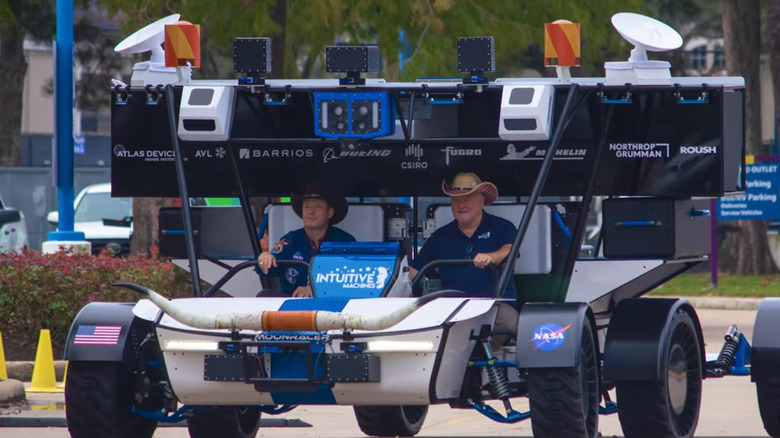NASA Just Revealed The Next Generation Of Moon Rovers
In 2024, NASA chose three different companies to build a moon rover for the ambitious Artemis missions. The plan is for only one of these innovative designs to get a multi-billion-dollar NASA contract and have its rover go to the moon. Now, the deadline is nearing to choose the winning design, as NASA is expected to give the announcement by the end of 2025.
Artemis I sent a spacecraft around the moon in 2022. Artemis II will send people around the moon in April 2026. Artemis III will have astronauts exploring the lunar south pole in mid-2027. Finally, Artemis IV has the ambitious goal of building the first-ever lunar space station for astronauts to live and work in. No official date has yet been set for that, and NASA is already tentatively looking ahead to what an Artemis V mission will look like.
The company Lunar Outpost has named its lunar terrain vehicle (LTV) Eagle. It takes its design inspiration from a truck with a towable trailer and strong rough-terrain capabilities. The second company is Venturi Astrolab with its LTV FLEX. FLEX stands for Flexible Logistics and Exploration, which is highly maneuverable. Lastly, there is the company Intuitive Machines with its LTV Moon RACER, standing for Reusable Autonomous Crewed Exploration Rover. With giant tires and a roll-cage-like structure, it seems ready for the difficult terrain of the moon.
The three moon rover designs
Lunar Outpost's Eagle LTV is a space truck for all intents and purposes. The Eagle rover is designed to be easy and safe for astronauts to operate in bulky space suits. It has joystick control, a spacious cockpit, and advanced suspension for driving over rocks. It can reach about 16 miles per hour on the moon. Its low frame makes it hard to tip over, and it's built to carry heavy loads. It uses MOLLE-style panels so astronauts can quickly attach or remove tools.
Astrolab's FLEX has a horseshoe-shaped frame that can grab and carry cargo underneath it. Astronauts can operate it standing, and its joystick control lets the vehicle spin, strafe, and reverse direction. It has modular compartments for tools or robotic parts, and can haul payloads of over 100 cubic feet. Its custom composite tires and built-in heaters are engineered to survive brutal lunar temperatures — though not as brutal as the distant moons that have freezing ice volcanoes.
Intuitive Machines' Moon RACER looks like a dune buggy. Leaning heavily into a sci-fi look, a joystick control scheme makes it quick and nimble. Its sturdy systems and ultra-cold-tolerant tires are built to survive micrometeorites, solar radiation, and extreme lunar temperatures. It's designed with towing as a core capability, allowing it to pull science labs, power units, or other mission modules. It has a specialized winch so a crew member can rescue a partner in low gravity.
What NASA is looking for in the winning rover
NASA is focused on selecting a vehicle that astronauts will rely on for safety, exploration, and long-term survival on the lunar surface. The chosen LTV has to work both with a human crew and completely on its own. NASA expects it to operate for years in extreme conditions. It also needs to travel far from landing sites so astronauts can research craters, ice deposits, and other sites of scientific interest.
To make that possible, NASA has set high standards. The low gravity of the moon makes tipping easier, so stability is a key feature NASA is focused on. A strong suspension system is also a must for the rough lunar terrain. It will need good navigational systems to operate in such a remote environment along with built-in safety systems to protect astronauts.
NASA is looking toward the future, even as we wait on Artemis II, NASA's first crewed mission to the moon in 50 years. The selected LTV must be reliable for the Artemis program's various needs: moving science equipment, towing future moon infrastructure, and assisting in case of an emergency. The more modular and adaptable the design is, the better it can support the agency's long-term goal for a sustainable human presence on the moon.


